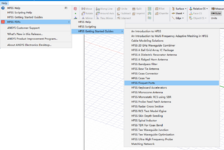KatoAn
Newbie level 5
Hi everyone!
I'm simulating a finite FSS using HFSS which has 144 unit cells. We all know that an infinite FSS model can be simulated using floquet port with master-slave boundary. As for a finite FSS, how to set the boundary condition and excitation? An hfss file with simulation model will help me a lot.
Thanks for your help!
I'm simulating a finite FSS using HFSS which has 144 unit cells. We all know that an infinite FSS model can be simulated using floquet port with master-slave boundary. As for a finite FSS, how to set the boundary condition and excitation? An hfss file with simulation model will help me a lot.
Thanks for your help!
